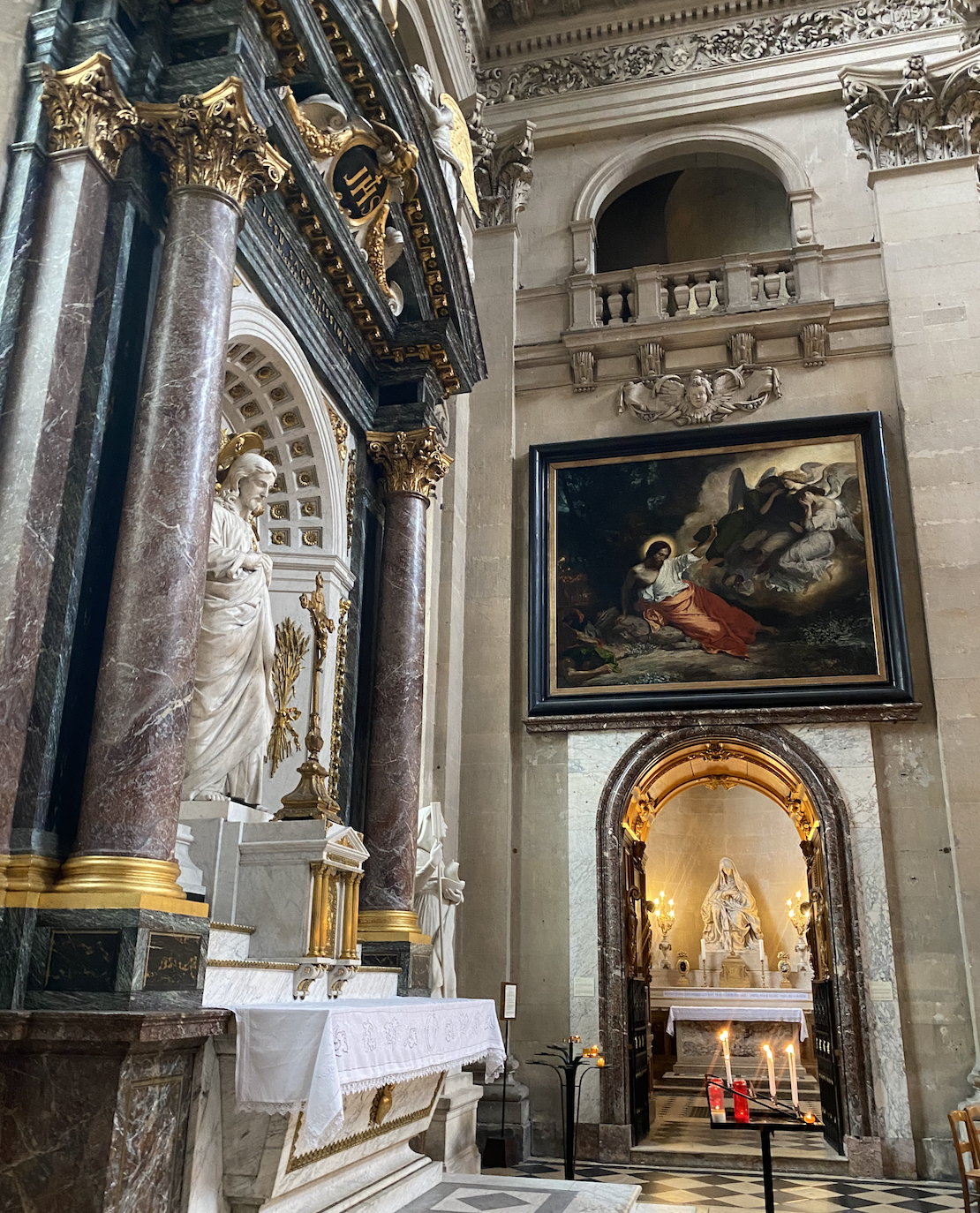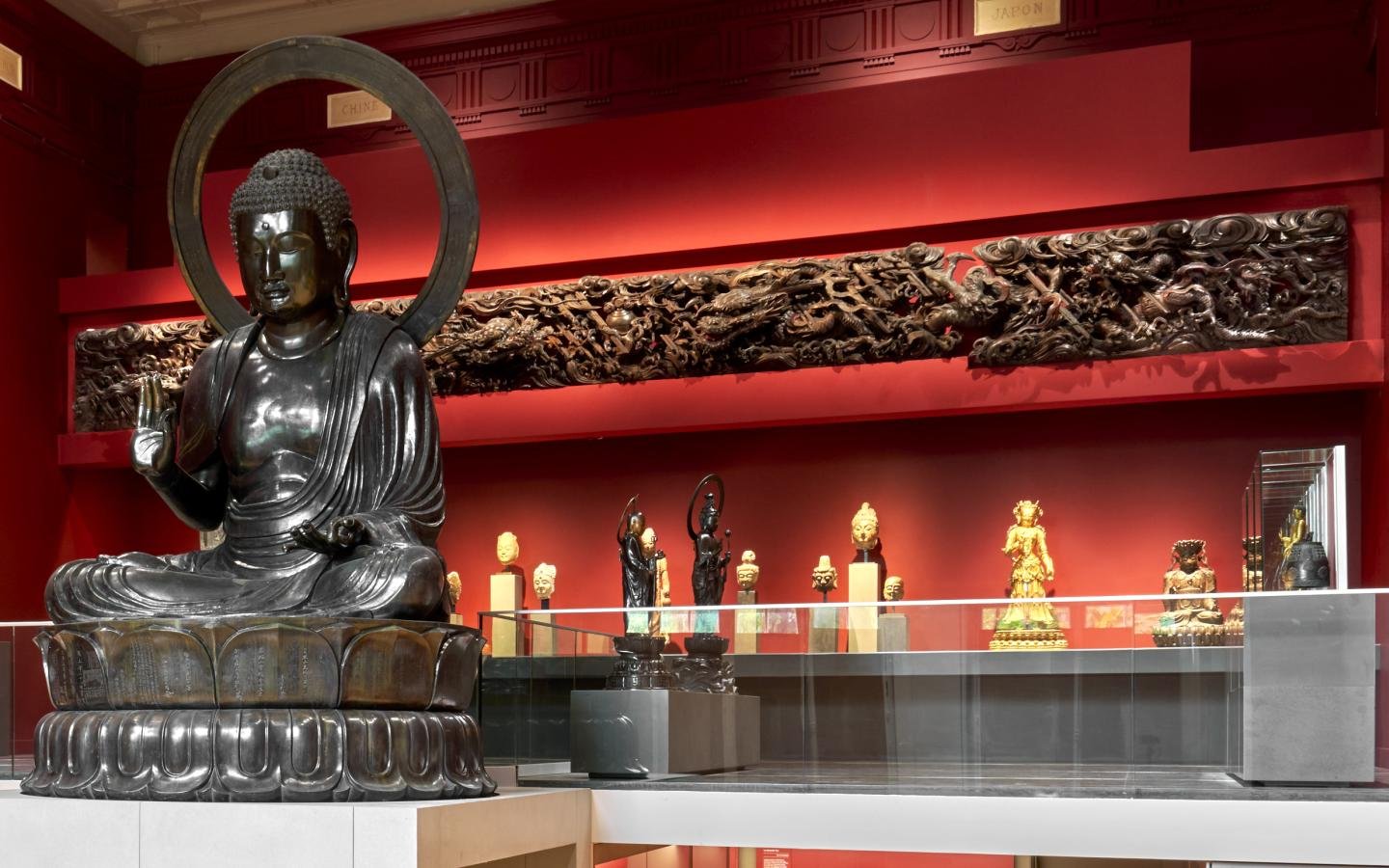In Part Two of Paris doesn’t have to break the bank we explore all the great things you can visit for free. Art, museums, live performances, and less expensive ways to dine in Paris.
As you stroll along the cobblestones of Paris, never miss a chance to take a peek inside the inviting open doors of the many churches. For it is inside you will find a treasure or two from some of the greatest masters of art, away from the crowds and for free.
Located in the 7th arrondissement is the Second Empire Neo-Byzantine church, St-François-Xavier. From the outside, it is not the most interesting of facades, but do not let that stop you. Inside you will lay your eyes on one of the greatest pieces by the Italian painter of the Venetian school, Jacopo Tintoretto. The Last Supper by Tintoretto was an image he painted many times, refining it along the way. Unlike the Leonard da Vinci version, Le Tintoret, as he is known in France, decided to gather the Apostles around a square table. It gives you the perspective that you are looking at them gathered from a hidden vantage point. A gift to the church in 1905, it can be seen today hanging in the wedding sacristy.
Just off Boulevard Saint Germain is the Latin Quarter church of Saint-Nicolas-du-Chardonnet which is a treasure trove of art. Charles Le Brun’s 1962 The Martyrdom of Saint John the Evangelist is striking and was a departure from the usual way the Saint was depicted. The painting shows the Saint being lifted by a rope towards the vat of boiling oil while the executioner blows on the fire below. Humanizing the Saint for the first time by showing his full body gave the painting movement and life.
You certainly cannot talk about the great art in the churches of Paris without talking about one man, Eugène Delacroix. The leader of the Romantic Movement, dedicated the last years of his life to painting large-scale decorations for public places, as a way for him to live on after he was gone.
Often overlooked in the bustling Le Marais is the Saint-Denys-du-Saint-Sacrement church. This was the first public commission for a religious mural for Delacroix in 1840. The familiar scene of La Pietà depicting the body of Christ in the arms of the Virgin after he is pulled down from the cross, was painted directly onto the wall of the Saint Genevieve chapel. Using bright colors for the figures and placing them in the foreground of the painting gives it even more depth and emotion.
Follow down Rue de Turenne for a few minutes and you will reach the gem of Rue Saint Antoine. The Italian and French Gothic church with its red doors is not to be overlooked. The inside is beautiful with its high dome, stonework, statues, and chandeliers. On the left of the transept above the door is Delacroix’s Le Christ au Jardin des Olivers painted in 1824 shows why he is the master of Romanticism. It shows Christ pushing back three angels that are hanging their heads in sadness, which is a slight change from the printed word. It was his liberal use of the biblical text and the changing of the story he would continue in all his religious pieces.
Last but not least, it is a visit to the largest church on the Left Bank, Saint-Sulpice where we will find his finest of religious paintings that remain today. Just inside the door to the right in the Chapel of the Holy Angels where Delacroix was given free rein of the paintings, the only stipulation was that they referred to the subject of angels. For the two walls he chose; Jacob Wrestling the Angel on the left, and on the right Heliodurus Driven from the Temple. Painted directly onto the walls with a medium mixed with wax and oil, it would take him over three years to complete. Hanging above is the beautiful Saint Michael Defeats the Devil, painted on a canvas and later secured into place. Each of these three works is filled with symbolism and even some small features that are more reminiscent of modern times than of biblical. A restoration was just completed in 2017 where the layers of the years were removed so they can now be seen in all their glory.
For the more contemporary art fans, there are a few pockets in Paris where you can find gallery after gallery of art. The Rue de Seine on the left bank just steps from the Ecole des Beaux-Arts is a lovely stroll, especially on a Thursday to Saturday night. Each one opens their door and sometimes there is even champagne. On the right bank, the Marais has many streets of galleries where you may find the next Picasso.
The lover of Renaissance and antiques the left bank between the Ecole des Beaux-Arts and the Musée d’Orsay is also filled with shops filled with objets d’art, paintings, and statues.
And now for some of my favorite places to spend a day, the museums of Paris. The City of Paris has a collection of museums that are free for visitors that span from the Liberation of Paris to a few well-known French authors, Hugo and Balzac. Scattered throughout the city, the museums are free to visit but you will need a ticket for any of the special exhibitions, which are normally under 10€.
A favorite is the Musée Carnavalet which opened in 2021 after what felt like an endless renovation. The collection is dedicated to the City of Paris and begins at the very start when it was the island of Lutetia. Over four floors you will climb to the top which focuses on the Revolution and death of many of its most notable figures and onto the Romantic movement. It’s a fantastic museum and lover of Paris needs to visit.
Other free museums include the Petit Palais with the collection of art owned by the city. The Musée Victor Hugo in the Place des Vosges and the author’s former home. The Musée Cognac-Jay and the collection of the husband and wife team that opened Samaritaine also include some amazing pieces of the Rococo period. The Musée Bourdelle and the art of Antoine Bourdelle including his many variations on the head of Beethoven you will also see in the Orsay.
In Passy past the Eiffel Tower is the Musée Balzac located in the author’s former home where he dodged bill collectors running out his back door. Not far is the Musée d’Art Moderne which is normally very quiet unless there is a special exhibition on display and across the avenue to the Musée Galliera which holds the fashion history of Paris. Special exhibits do need a ticket and the permanent collection isn’t always on display so it’s a little vague on if this one can be considered a free museum, but still not one to miss.
The Musée Cernuschi located at the edge of the Parc Monceau holds the collection of Henri Cernuschi who died in 1896 and left his home and collection to the city of Paris. Opened as the 2nd largest collection of Asian art in Europe it is a fantastic small museum to visit. Other museums include the Liberation Museum, Museum of the Romantic Life, and Musée Zadkine all great ones to add to your list of places to see.







